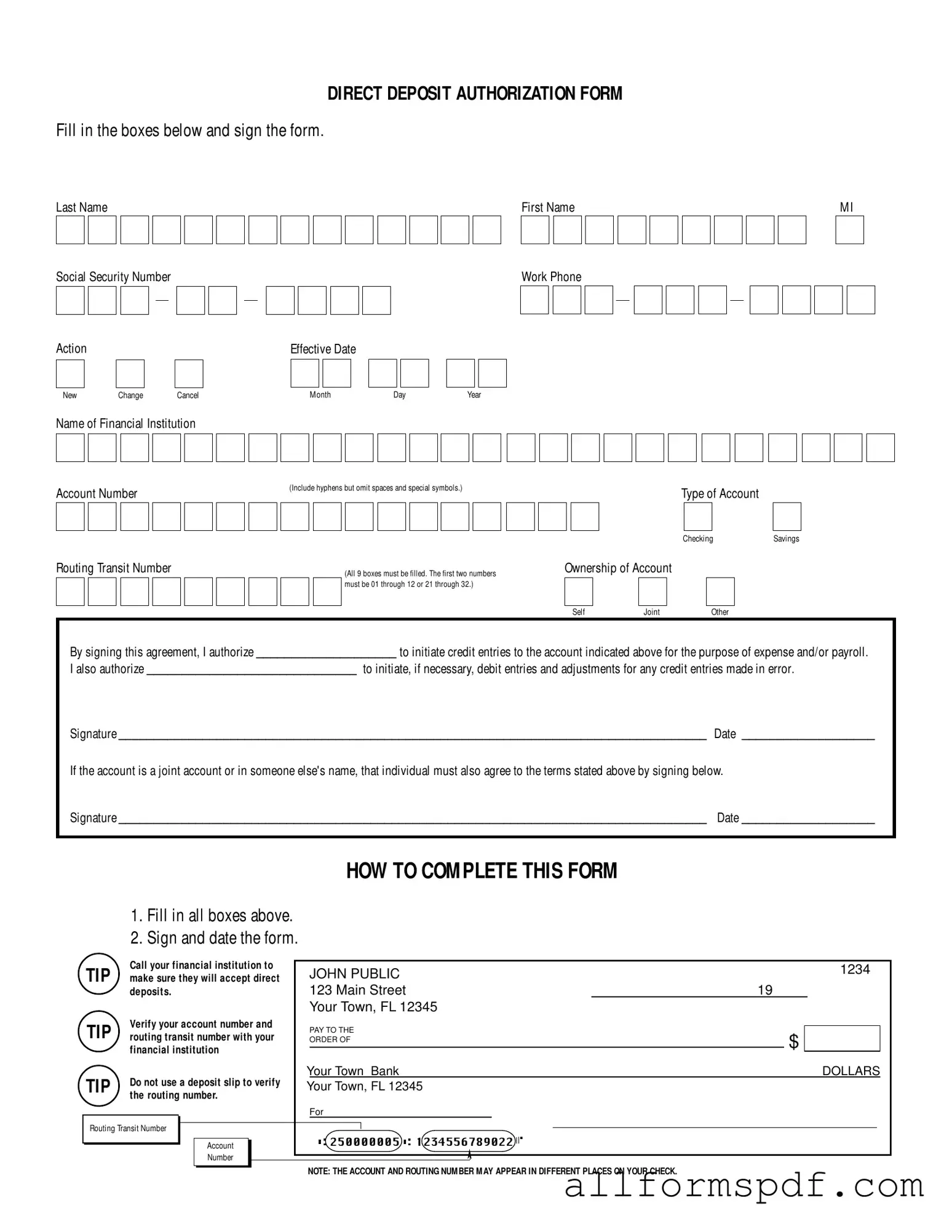Generic Direct Deposit - Usage Guidelines
Filling out the Generic Direct Deposit form is a straightforward process. This form is essential for setting up direct deposits into your bank account. By completing it accurately, you ensure that your funds are deposited correctly and on time. Here’s how to fill it out step-by-step.
- Begin by entering your Last Name, First Name, and Middle Initial in the designated boxes.
- Next, provide your Social Security Number in the specified format.
- Indicate the Action you wish to take: New, Change, or Cancel, and fill in the Effective Date.
- Fill in your Work Phone Number as requested.
- Write the name of your Financial Institution clearly.
- Input your Account Number, ensuring to include hyphens and omit any spaces or special symbols.
- Select the type of account by checking either Savings or Checking.
- Provide your Routing Transit Number, making sure all nine boxes are filled. Remember, the first two numbers must be between 01 and 12 or 21 and 32.
- Indicate the Ownership of Account by checking the appropriate box: Self, Joint, or Other.
- Sign the form in the space provided, and include the date.
- If the account is joint or in someone else’s name, that individual must also sign and date the form.
After completing the form, it’s wise to double-check all entries for accuracy. This will help avoid any delays or issues with your direct deposit. It’s also a good idea to contact your financial institution to confirm that they accept direct deposits and to verify your account and routing numbers. Taking these extra steps ensures a smooth process for your financial transactions.
